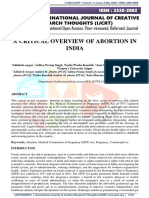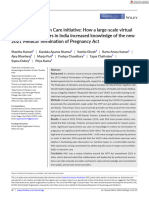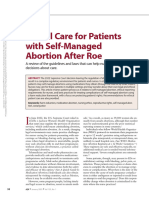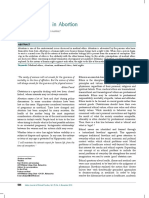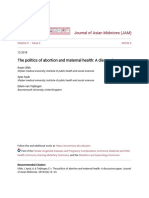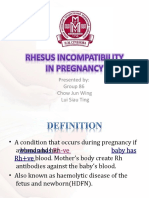0% found this document useful (0 votes)
2 views5 pagesMedical Students' Attitudes and Perceptions On Abortion: A Cross-Sectional Survey Among Medical Interns in Maharastra, India
A cross-sectional survey of 1996 medical interns in Maharastra, India, revealed that many hold disallowing attitudes toward abortion, with 25% considering it morally wrong and 20% not accepting it for unmarried women. Despite recognizing unsafe abortion as a serious health issue, only 13% had clinical practice in abortion care services. The study suggests that improving medical education and training could enhance knowledge and attitudes towards abortion, potentially increasing the number of providers for safe and legal abortion services.
Uploaded by
dyyjpy7bj8Copyright
© © All Rights Reserved
We take content rights seriously. If you suspect this is your content, claim it here.
Available Formats
Download as PDF, TXT or read online on Scribd
0% found this document useful (0 votes)
2 views5 pagesMedical Students' Attitudes and Perceptions On Abortion: A Cross-Sectional Survey Among Medical Interns in Maharastra, India
A cross-sectional survey of 1996 medical interns in Maharastra, India, revealed that many hold disallowing attitudes toward abortion, with 25% considering it morally wrong and 20% not accepting it for unmarried women. Despite recognizing unsafe abortion as a serious health issue, only 13% had clinical practice in abortion care services. The study suggests that improving medical education and training could enhance knowledge and attitudes towards abortion, potentially increasing the number of providers for safe and legal abortion services.
Uploaded by
dyyjpy7bj8Copyright
© © All Rights Reserved
We take content rights seriously. If you suspect this is your content, claim it here.
Available Formats
Download as PDF, TXT or read online on Scribd
/ 5







